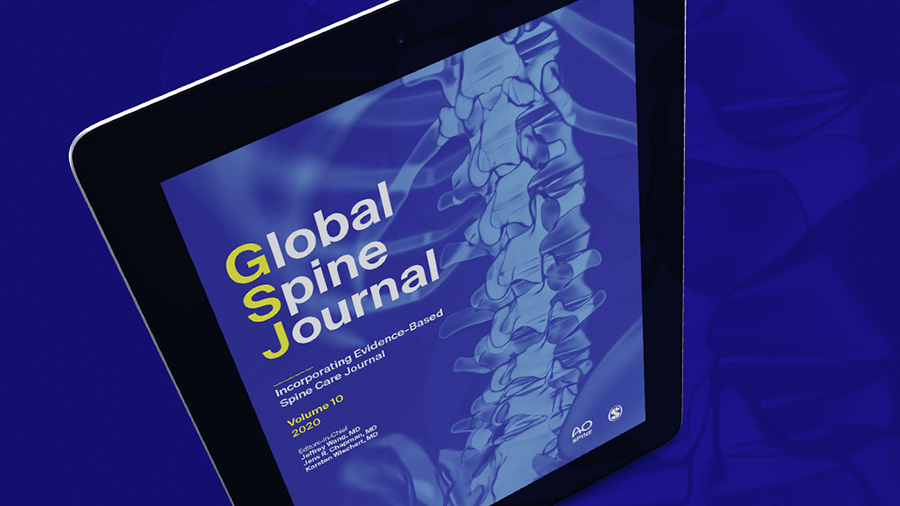AO Spine launches RELIEVE study to advance pain relief in spine tumor patients

The AO Spine Knowledge Forum Tumor is proud to announce the launch of the RELIEVE study—Research on Effectiveness of Surgery and Radiotherapy in Relieving Mechanical and Radicular Pain in Patients with Vertebral Metastasis—a multicenter international prospective observational study aimed at improving outcomes for patients suffering from metastatic spine disease.
The RELIEVE study seeks to assess how surgical and radiotherapeutic interventions can effectively relieve mechanical and radicular pain in patients with metastatic spine disease. This initiative is part of AO Spine’s broader mission to advance spine oncology care worldwide through evidence-based research and global collaboration.
Principal Coordinating Investigator Ilya Laufer, Chairperson of the AO Spine Knowledge Forum Tumor, emphasized the urgency and impact of the RELIEVE study: “We’ve made great strides in treating spinal tumors, but many patients continue to suffer from lingering pain. The RELIEVE study is designed to address this gap. This will help us tailor interventions more precisely and improve quality of life for our patients.”
The RELIEVE study is a key scientific initiative from AO Spine, reinforcing its role in global spine oncology research. Recruitment is underway, and the study team is actively engaging with surgeons and clinical centers worldwide.
Investigators

Ilya Laufer
NYU Grossman School of Medicine
New York, NY, USA

Ori Barzilai
Memorial Sloan-Kettering Cancer Center
New York, NY, USA
AO Spine Tumor Acute Pain Classification helps measure different kinds of pain
Co-Principal Investigator Ori Barzilai stressed that pain from spinal metastases significantly impacts patients’ quality of life, functional ability, and treatment outcomes. “While advances in surgical techniques have shown promise, previous studies often lacked nuanced differentiation, categorizing pain simply as mechanical or non-mechanical. This has led to inconsistent pain outcome measurements.”
The RELIEVE study addresses this gap by employing the AO Spine Tumor Acute Pain Classification, which categorizes neoplastic spinal pain by etiology. The study focuses on four distinct types of pain:
- Axial non-triggered pain: Likely caused by periosteal stretching or chemical release, often worsening at night and responsive to steroids or opioids.
- Axial triggered/mechanical pain: Results from structural instability or fractures, typically requiring surgical stabilization.
- Radicular non-triggered pain: Caused by persistent nerve root compression, treatable via decompression or radiotherapy.
- Radicular triggered/mechanical pain: Due to transient nerve root compression from instability, often relieved by surgery and positional changes.
Patients with a single symptomatic metastatic site causing at least one type of moderate or severe pain (NRS > 4) will be enrolled. Treatments include:
- Surgery alone
- Surgery with postoperative radiotherapy
- Radiotherapy alone
“Day 0” is defined as the date of the first treatment—either surgery or radiotherapy. Follow-ups will occur at 1-, 3-, and 6-months post-treatment. The primary outcome is the intensity of pain caused by the index metastasis. Secondary objectives include identifying predictors of pain relief and exploring the relationship between pain and other patient-reported outcomes (PROs).
In short:
The study will use the AO Spine Tumor Acute Pain Classification to categorize neoplastic spinal pain by etiology. The proportions of responders and non-responders based on pain relief from the worst baseline index pain—the worst of one kind or multiple kinds of pain, if the patient has experienced multiple kinds of index pain at baseline—after surgery and/or radiotherapy will be described.
The primary study outcome is the intensity of the four different types of pain caused by the index spinal metastasis. The study will delineate how these kinds of pain respond to treatment over time. Secondary objectives will investigate factors predictive of pain relief and the relationship between pain and other patient-reported outcomes (PROs).
This AO Spine-sponsored study is executed with support from the AO Innovation Translation Center (AO ITC) Clinical Evidence.
For more information, visit ClinicalTrials.gov Identifier: NCT06746103
You might also be interested in...
AO Spine Knowledge Forum Tumor
A global clinical research group advancing spine oncology care worldwide.
Precision Medicine in Spinal Oncology
A special issue of Global Spine Journal giving an overview from Knowledge Forum Tumor.
AO Surgery Reference
A resource for the management of spinal tumors, based on current clinical principles, practices and available evidence.
Patient Expectations in Spine Oncology
Disease-specific outcome tools developed and validated by AO Spine.





